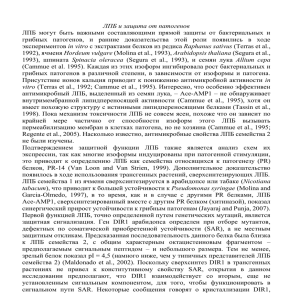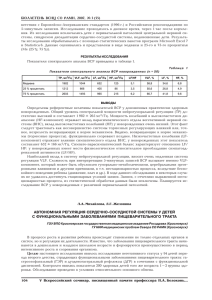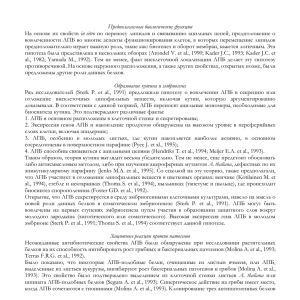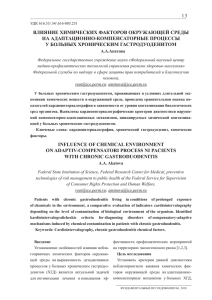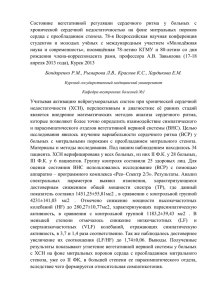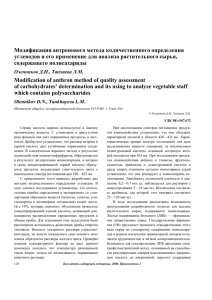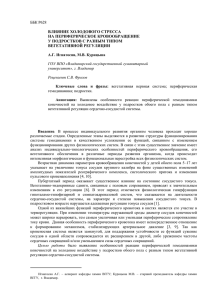Z. mays
advertisement

1.3.2. Антимикробная активность. Антимикробная активность ЛПБ1 была обнаружена при разделении белковых экстрактов из растений, проводившемся с целью найти белки, которые могут ингибировать рост фитопатогенов in vitro. Среди ингибируемых фитопатогенов оказались грибы и бактерии, тем не менее антимикробная активность ЛПБ была выше против грибов. Молина и соавт. выделили 4 липидпереносящих белка из листьев ячменя и 1 из листьев боярышника, и все они показали активность против бактерий подвида Clavibacter michiganensis, Rhalstonia (Pseudomonas) sonanacearum и грибов Fusarium solani. Два других пептида, гомологичных ЛПБ, полученных из листьев A. thaliana, и еще 2 из листьев Spinacia oleracea, также показали антимикробную активность против вышеупомянутых патогенов. Ванг и соавт. показали антимикробную активность ЛПБ, выделенной из семени фасоли маш, в отношении грибов F. solani, F. oxysporum, Pythium aphanidermathum и Sclerotium rolfsii, а также против граммположительных бактерий Staphylococcus aureus. Что касается патогенов человека, два ЛПБ, выделенных из Pandanus amaryllifolius не ингибировали S. aureus, равно как и другие грам-отрицательные кишечные бактерии: Escherichia coli, Enterobacter aerugenes, Proteus vulgaris, Vibrio cholera, V. parahaemolyticus и Salmonella typhimurium. Единственной ингибируемой грам-отрицательной бактерией оказалась Pseudomonas aeruginosa. Дрожжи Candida albicans, вызывающие инфекцию у человека, также не ингибировались ЛПБ, выделенными из P. amaryllifolius и Hordeum vulgare. Хотя растительные ЛПБ и считали антимикробными пептидами, многие исследователи сообщали, что некоторые ЛПБ1 обладают низкой или вообще не обладают активностью против грибов, среди них образцы из T. aestivum и Z. mays. Антимикробная активность, сходство аминокислотных последовательностей и индукция при атаке патогенна привели к включению трех пептидов в 14 семейство белков патогенеза. Активность ЛПБ зависит от вида исследованного микроорганизма, например, белок из листьев O. sativa, экспрессированный в E. coli, показал активность против грибов Pyricularia oryzae в концентрации 27 мкг·мл-1. Этот ЛПБ также ингибирует бактерии Pseudomonas syringae в тех же концентрациях, но не показывает ингибирующей активности в отношении Xanthomonas oryzae, за исключением задержки роста данного гриба. Наиболее сильный белок из класса ЛПБ был получен из семян лука – это вышеупомянутый Ace-AMP1. Этот пептид был способен ингибировать все 12 исследованных грибов и грам-положительные бактерии Bacillus megateruim и Sarcina lutea в концентрациях ниже 10 мкг·мл-1. Так же как и другие, ранее исследованные ЛПБ, этот пептид не показал активности против граммотрицательных бактерий. Несмотря на его высокую антимикробную активность, Ace-AMP не оказывает токсического действия на клетки млекопитающих (фибропласты) и не вызывает гемолиза эритроцитов в концентрациях ниже 200 мкг·мл-1. Аналогичное отсутствие цитотоксичности в отношении млекопитающих было показано для ЛПБ из других растений. В отличие от других ЛПБ, данный пептид не был способен к связыванию и переносу гидрофобных молекул, как было отмечено выше. Пример Ace-AMP1 показывает, что связывающая и транспортная активности липидов могут не быть прямо сопряжены или соотнесены со способностью к взаимодействию с мембранами и, в таком случае, с антимикробной активностью. Этот пример также свидетельствует, что взаимодействие ЛПБ с мембраной не настолько хорошо понимается, насколько осмыслена его активность при связывании и переносе гидрофобных молекул. С тех пор, как были открыты ЛПБ – пептиды со способностью ингибировать фитопатогены − исследователи считали, что этот эффект мог быть обусловлен взаимодействием пептидов с биомембранами, что возможно приводило к пермеабилизации мембран, обусловленной потерей их целостности. Было показано, что ЛПБ1 действительно взаимодействует с искусственными мембранами, а именно: однослойными мембранами, состоящими из дипальмитоилфосфатидилглицерола, и большими однослойными везикулами, заполненными флуоресцентными агентами. Недавно было показано, что фракция, обогащенная ЛПБ, выделенная из семени перца чили, ингибирует рост Saccharomyces cerevisiae, C. albicans и Schysosaccharomyces pombe в концентрациях 9–150 мкг·мл-1. Эти же исследователи показали, что фракция, содержащая ЛПБ из перца чили, способна пермеабилизировать цитоплазматическую мембрану дрожжей и обеспечивать проникновение небольшой пробы (900 Да) SYTOX Green – красителя, обладающего высоким сродством к нуклеиновым кислотам, который флуоресцирует при связывании с ними, и проникает только в клетки с модифицированной цитоплазматической мембраной. Другой ЛПБ, выделенный из семени подсолнечника, полностью подавляет рост спор F. solani, что также было показано в ходе анализа с помощью пермеабилизации SYTOX Green. Тем не менее, эти результаты подтверждают сведения, полученные с использованием искусственных мембран и липосом; а механизм действия на эти целевые организмы, равно как и антимикробные свойства семейства ЛПБ 2 до сих пор не были объяснены. 1.3.3. В качестве пищевых аллергенов. Некоторые сообщения однозначно предлагают, что большинство аллергенов из различных видов растений являются белками семейства ЛПБ1; такие пептиды были обнаружены в плодах Rosaceae, плодах Vitaceae, а также в других видах растений, таких как Aspargus officinalis, B. oleracea разновидности capitata и Z. mays. Было показано, что ЛПБ относительно стабильны, устойчивы к тепловой и химической денатурации и ферментативному расщеплению. Эти устойчивые физико-химические характеристики позволяют данным пептидам достигать кишечника млекопитающих в устойчивой форме. Хотя способность ЛПБ сенсибилизироваться с помощью желудочно-кишечного тракта не была еще до конца осмыслена; предполагается, что раз они присутствуют в желудочно-кишечном тракте в иммуногенной форме, они свободны для взаимодействия с кишечной иммунной системой, посредством которой сенсибилизируют особей. Аллергенные белки используют некоторые свойства, такие как способность к связыванию с лигандами, например как в казеине из молока и парвальбумине из рыбы, где оба белка способны связывать ионы Ca2+ и, похоже, остаются более стабильными после такого связывания. В случае ЛПБ пептиды связываются с фосфатидилхолином – природным ПАВ, который выделяется слизистой оболочкой желудка, а также находится в желчи. Также показано, что данное связывание является также дополнительной ферментативной защитой, замедляющей разрушение виноградного ЛПБ. Понимание механизма, по которому ЛПБ вызывает аллергию, может позволить понять механизмы действия других аллергенных белков, особенно для оценки, насколько аллергенен может быть определенный белок в новом продукте питания, или при использовании в освоении видов аллергенов с уменьшенными побочными эффектами, которые затем могут быть использованы в качестве вакцин, а также для разработки надежных методов диагностики. 2. Заключение. В итоге, ЛПБ – это пептиды, в отношении которых все еще не достигнуто общее согласие о их физиологической роли in vivo. Несмотря на все сообщения о ЛПБ, для этих пептидов в данной работе не было окончательно выявлено определенной биологической функции. Исследования, изучающие биологическую функцию в растениях, использующие включение бессмысленных копий в гены ЛПБ, требуют дальнейшего глубокого проникновения в суть вопроса; тем не менее, проведенные уже исследования доказали определенную сложность такого изучения, обусловленную тем, что данные пептиды охватывают собой мультигеномное семейство с различными генами, которые экспрессируются в различных тканях, на разных уровнях развития растений, и которые также по-разному реагируют на ряд раздражителей. 1.3.2. Antimicrobial activity The antimicrobial activity of the LTPs1 was discovered by the screening of proteic extracts of plants, in order to find proteins that could inhibit the growth of phytopathogens, in vitro [42]. Among the phytopathogens inhibited were bacteria and fungi, however the activity was stronger against fungi [31]. Molina et al. [42] isolated four LTPs from barley leaves and one from Z. mays leaves and all of them presented biological activity against the bacteria, Clavibacter michiganensis subsp. sepedonicus and Rhalstonia (Pseudomonas) sonanacearum, and the Fusarium solani fungus. Two other peptides that are homologues of the LTPs, obtained from A. thaliana leaves, and two others from Spinacia oleracea leaves, also demonstrated antimicrobial activity against the aforementioned pathogens [61].Wang et al. [81] demonstrated the antimicrobial activity of a LTP isolated from mung bean seeds against the fungi, F. solani, F. oxysporum, Pythium aphanidermathum and Sclerotium rolfsii and also against the Gram positive bacterium, Staphylococcus aureus. In regard to human pathogens, two LTPs isolated from Pandanus amaryllifolius did not inhibited S. aureus as other Gram negative enteric bacteria, namely Escherichia coli, Enterobacter aerugenes, Proteus vulgaris, Vibrio cholera, V. parahaemolyticus and Salmonella typhimurium. The only Gram negative bacterium inhibited was Pseudomonas aeruginosa [45]. The human infectious yeast Candida albicans was also not inhibited by LTPs isolated from P. amaryllifolius [45] and Hordeum vulgare [23]. Albeit plant LTPs have been considered an antimicrobial peptide it had been reported that some LTPs1 present low or did not present antifungal activity, among them are examples from T. aestivum [19] and Z. mays [10]. The antimicrobial activity, sequence similarities and induction upon pathogen attack have led to the inclusion of these peptides in the family of pathogenesis-related proteins that compose the family 14 [74]. The activity of the LTPs seems to depend on the microorganism tested, for example, one LTP from O. sativa leaves, expressed in E. coli, presented activity against the Pyricularia oryzae fungus at concentrations of 27 mgmL_1. This LTP also inhibited the bacteria, Pseudomonas syringae, at the same concentrations, but did not present inhibitory activity agaisnt Xanthomonas oryzae, except a delay in its growth [21]. The most potent peptide belonging to the LTP class was obtained from onion seeds, the above mentioned Ace-AMP1 [10]. This peptide was able to inhibit all of the 12 fungi tested and the Gram positives bacteria, Bacillus megateruim and Sarcina lutea, at concentrations below of 10 mgmL_1. As already demonstrated with other LTPs, this peptide did not present activity against Gram-negative tested bacteria [10]. Despite its strong antimicrobial activity, Ace-AMP did not presented toxicity against mammal cells (fibroblasts) or cause hemolysis of erythrocytes until concentrations of 200 mgmL_1 were reached, the same lack of cytotoxicity against mammals was demonstrated for LTPs from other plant species [10,21]. Differently to the other LTPs, this peptide was not able to bind and transport hydrophobic molecules as mentioned above [10]. The example of Ace-AMP1 demonstrates that the binding and transport activities of lipids may not be directly associated or correlated with the ability of interaction with membranes and, in this case, with the antimicrobial activity. This example also reflects that the interaction of LTPs with membranes is not as well understood as the activity of binding and transport hydrophobic molecules. Since the discovery of the LTPs as peptideswith the capacity to inhibit phytopathogens, it has been speculated that this effect could result from the interaction of the LTPs with biologicalmembranes, possibly leading to the permeabilization due to loss of membrane integrity [31]. Indeed LTPs1 have been shown to interact withmodel membranes, such asmonolayers composed of dipalmitoilphosphatidylglycerol [66] and large unilamellar vesicles filled with fluorescent dyes [9]. It has been recentlydemonstratedthatafractionenrichedonLTP, obtained fromchilli pepper seeds, inhibited the growth of Saccharomyces cerevisiae, C. albicans and Schysosaccharomyces pombe at concentrations of 9–150 mgmL_1. This same report demonstrated that the fraction containing the chilli pepper LTP is able to permeabilize yeast plasma membrane and allow the entrance of the small dye (900 Da), SYTOX Green (Molecular Probes), a high affinity nucleic acid stain that fluoresces upon binding to nucleic acids and that only penetrates cells with compromised plasmamembranes [17]. Another LTP, isolated form sunflower seeds [57], completely abrogated the growthof F. solani spores at 40 mgmL_1, decreasing the viability of these cells to a lethal condition at this concentration. The Helianthus annuus LTP is able to permeabilize the membranes of F. solani spores, as also demonstrated by the SYTOX Green permeabilization assay [58]. Nevertheless, these results validate the information obtained from artificial membranes and liposomes, the mechanism of action on these target organisms as well the antimicrobial properties of the LTP2 family have not yet been elucidated. 1.3.3. As food allergens Several reports have unambiguously suggested that the major allergens of diverse plant species are proteins members of LTPs1 family, such peptides have been reported in fruits of Rosaceae [15,49,51] in fruits of Vitaceae [52] as well as in other plant species such as Aspargus officinalis, B. oleracea var. capitata and Z. mays [16,46,50,75]. It has been demonstrated that LTPs are relatively stable, resisting thermal and chemical denaturation and enzymatic digestion [3,37,53,76]. These stable physical–chemical features allow these peptides to reach the intestine ofmammals in an immunenic form. Although the ability of LTPs to sensibilize via the gastrointestinal tract is not fully understood yet, it is supposed that once they are present in the gastrointestinal tract and in an immunogenic formthey are free to interact with the intestinal immune system of sensitizing the individuals. Allergenic proteins share some characteristics, such as the ability to bind to ligands, as related in parvalbumin fromfish and casein from milk, both bind Ca+2 ions and seemto remainmore stable after this binding [6,73]. In the case of LTP, peptides bind to phosphatidylcholine, a physiological surfactant that is secreted by gastricmucosa and also occurs in bile. It has also shown that this binding results in an additional enzymatic protection, slowing down the breakdown of the grape LTP [76]. The understanding of the mechanism by which LTPs cause allergy may allow the possibility understand the mechanisms of other allergenic proteins, especially for assessing how allergenic a given protein in new foods could be or when used in the development of allergen variants with reduced side effects that could then be used as vaccines and also for the development of a reliable method for diagnosis [35]. 2. Conclusion Finally, LTPs are peptides that still do not possess a single consensus in relation to their physiological role, in vivo. Despite all the information related, herein, a definitive biological function has not been conclusively provided for these peptides. Investigations studying biological functions in plants that bear antisense transcripts to the LTP genes should yield further insights; however, studies to date have proved to be particularly complicated, since these peptides comprehend a multigenic family with different genes that are expressed in different tissues, in different development stages of plants and that also react differently to an array of stimuli [20,31,64].
